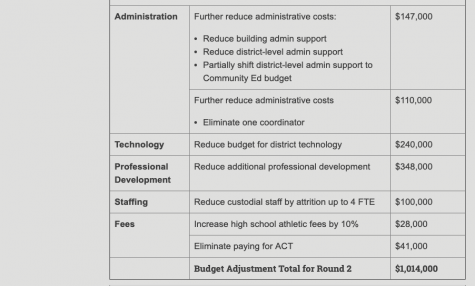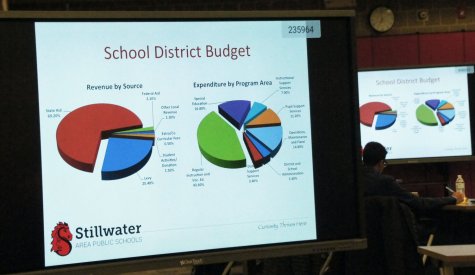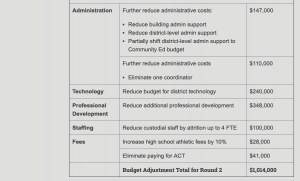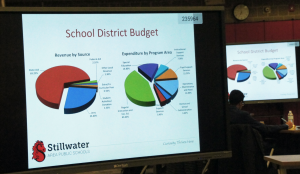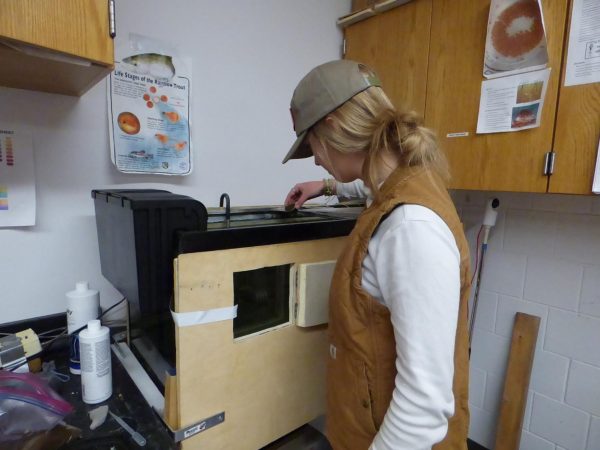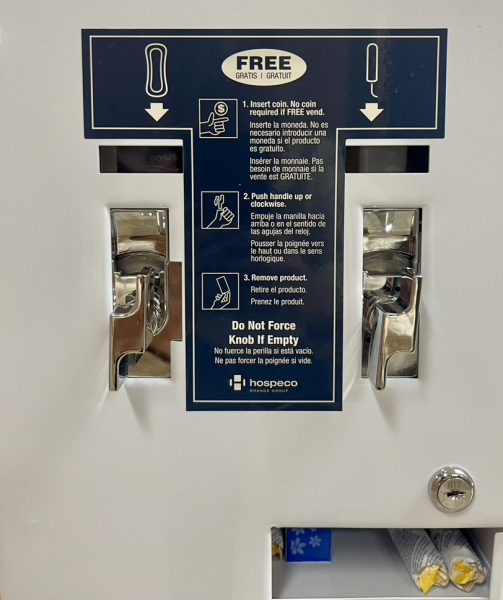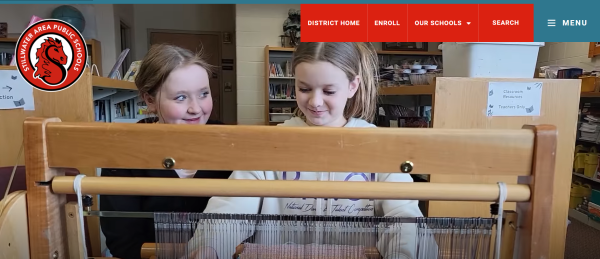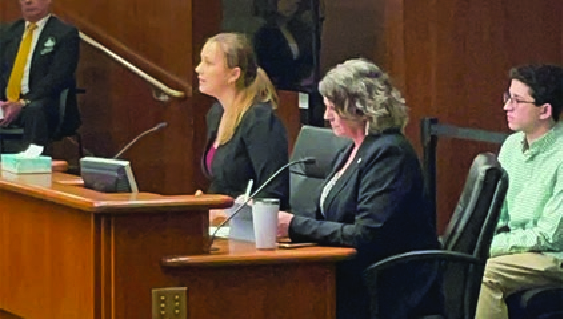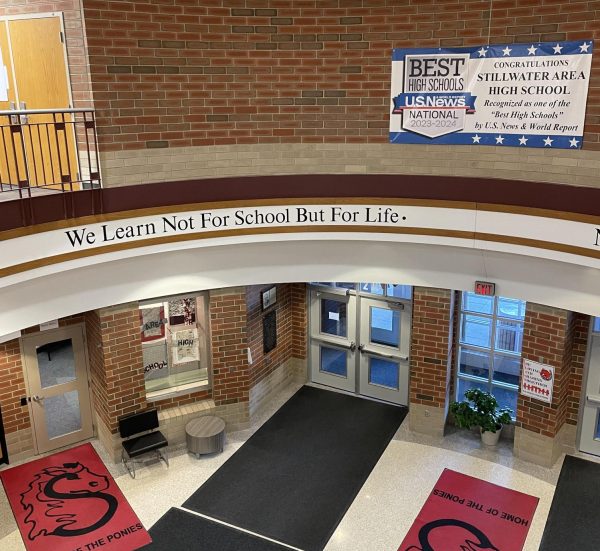Budget cuts severely diminish professional and curriculum development plans
The school board voted 5-1 to cut $348,000 from the district’s budgeted professional development (PD) days at a March 7 business meeting. This was on top of the $500,000 cut with combined PD and curriculum development budget that occurred Dec. 20, 2018.
This cut accounted for roughly 56 percent of the PD budget according to Rachel Larson, the district’s Director of Learning and Student Engagement. Though the district PD team knew about the potential cuts, they had decided to wait until they knew for sure to dig in with their plan for the 2019/2020 school year.
Larson described PD as an “invisible necessity,” citing that as a potential reason for PD bearing such a drastic cut.
“I think if you’re a teacher, you know that to do your job, well, you need those supports to keep growing and keep learning,” Larson said. “But I think when you consider cutting a teacher that’s connected with a classroom or a program, that’s harder to look at, because you see the direct impact of how that affects what’s happening in the experience of one child or many children. Professional development was a way to protect our staff.”
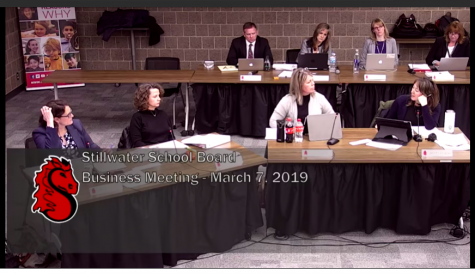
The School Board discusses their action items at the school board meeting. Staff development cuts passed 5-1, with Board Member Jennifer Pelletier (right) the only nay.
What ‘Professional Development Day, No School!’ Actually Means
Professional development within the district occurs at the school level. These are educational experiences for the teachers, who are exposed to new research and technology, learn from collaboration and discuss different kinds of best practice for the students.
“The school’s always been very supportive of it,” Katharine Barré, AP Literature and Composition teacher, said. “When I asked to go to something, I almost always get approved.”
Learning Policy Institute describes professional development as an “essential component of a comprehensive system of teaching and learning that supports students to develop the knowledge, skills, and competencies they need to thrive in the 21st century.”
In essence, PD allows teachers to avoid becoming stagnant in their profession. As they constantly attend trainings, they can constantly update their classroom to make learning more efficient and fun.
“We’re all lifelong learners,” Rob Bach, Stillwater Area High School Principal, said. “Professional development is one of the ways that we continue to learn, it’s one of the ways that we continue to figure out what best practices.”
These trainings act as a structured environment for discussion about different ways to better the learning environment, similar to a large scale version of the PLC that SAHS teachers participate in weekly.
“Sometimes they’re just speakers,” Barré said. “And sometimes they’re how to use certain apps in the classroom. Or maybe it’s digital storytelling. And you can learn how to bring digital storytelling into your classroom. Or maybe it’s just more fun games that you can bring into your classroom.”
Individual teachers can request to go to specific sessions, but many of the PD days that are built into the calendar year are meant to be district initiatives. These are places where the administration as a whole wants teachers to learn skills.
“We also have district wide focus areas for professional development,” Larson said. “We’ve been focusing on culturally responsive teaching and equity, and also social emotional learning.”
Curriculum Cuts
Each discipline taught at SAHS also goes through curriculum review where the curriculum is changed and updated for incoming classes. This year, the English department is now directly impacted by the around 27 percent curriculum budget reduction.
“There are a number of English teachers who’ve been meeting regularly this year to decide on the future of our curriculum, what route we want to take, if there are resources we need if we need, if we’re interested in buying books to enhance our curriculum,” Barré explained. “We’ve been going down this path a year, and we just discovered that that budget will be significantly impacted. So we won’t have the money that we expected to have to build our curriculum.”
“I don’t have to worry about always replacing texts,” Barré stated. “We will have money for that. I just don’t know. We’re just not going to have the amount that we thought we’re going to have. I don’t know if that will impact technology that we get.”
But I think when you consider cutting a teacher that’s connected with a classroom or a program, that’s harder to look at.Professional development was a way to protect our staff.
— Rachel Larson
Advanced Placement Classes
Teachers need to fill out an application form to attend individual staff development trainings. In a more specific type of PD, AP teachers have to go through specific types of training to learn the coursework. Teachers at Stillwater have gone to the University of Minnesota and Carleton College in the past.
“I know with the budget cuts, they’re cutting back on these types of opportunities.” Barré added,”I have a feeling that AP teachers will still be supported in their development.”
Since AP standards are national, teachers are able to bond and learn from each other across school district lines. Unlike some of the more unique classes offered at Stillwater, such as Biotechnology or Floral Design, AP Lit yields itself to easy discourse.
“It’s just a great opportunity to get different ideas from trained AP professionals, but also to meet with colleagues similar to myself, maybe some who are starting out and some with a bit more experience,” Barré said. “We spend almost the entire day just sharing our experiences and sharing ideas. It’s great for validation of what you’re doing. But it’s also awesome, just to get new perspectives.”
Historically AP teachers have been able to go to multiple trainings, generally consisting of one fall session and one summer session. Larson voiced concerns about potentially not having funding to continue to send individuals to outside PD, especially those who have greater experience teaching their classes. At the minimal impact, any single teacher will “definitely not get the amounts that they’ve had before to personalize their professional development.”
“That’s really empowering for teachers because the district offers professional development that’s focused on district initiatives,” Larson explained. “But it’s the building PD dollars where teachers and buildings can really specify what areas they want to focus on. And so it takes a little bit of that away for a year.”
The Uncertainty
With the recency of the cuts, the administration has no clear plan for what staff development will look like going forward. With so much money being taken from the budget, it would require an upheaval of the existing system. Bach says he doesn’t know what the school will be “able to support” next year.
“We have some days on the calendar that are allocated specifically towards professional development within,” Bach added. “So what we try to do is we try to schedule either activities, informational sessions, but learning sessions into the course of those days. Those days will probably take on some added importance, so it’s not like all of our professional learning is going to come to a stop. We will still have opportunities to do that. Teachers may not have as much opportunity to access other outside places that they want to go. But we will certainly continue to provide the internal pieces with our staff.”
While each building had previously had their allocated PD budget based on their size and relative staff numbers, the district’s cuts severely diminish some of the small school’s budgets. How the new process for planning PD days and events has been altered by the district control and the small budget is still unknown.
“That’s something that I think remains to be seen once we know what numbers we’re actually dealing with,” Bach said.
Plans have yet to truly be developed for the next year, given the recency of the cuts. Basic priorities would include mandatory trainings, such as AP, then towards district initiatives that have already been set in motion, such as Responsive Classroom, then finally towards individual schools and teachers. Larson expressed a desire to do the best by teachers, but given the extremity of the cuts, over half the budget, the impacts are not yet understood.
“I don’t know how much I’ll be supported in future,” Barré said. “I guess I don’t really know the extent of the cuts yet.”

Abby Banks is a senior and is a Print Editor-in-Chief on the Pony Express. Her favorite fruits are pineapple and passion fruit. She is junior officer of...



